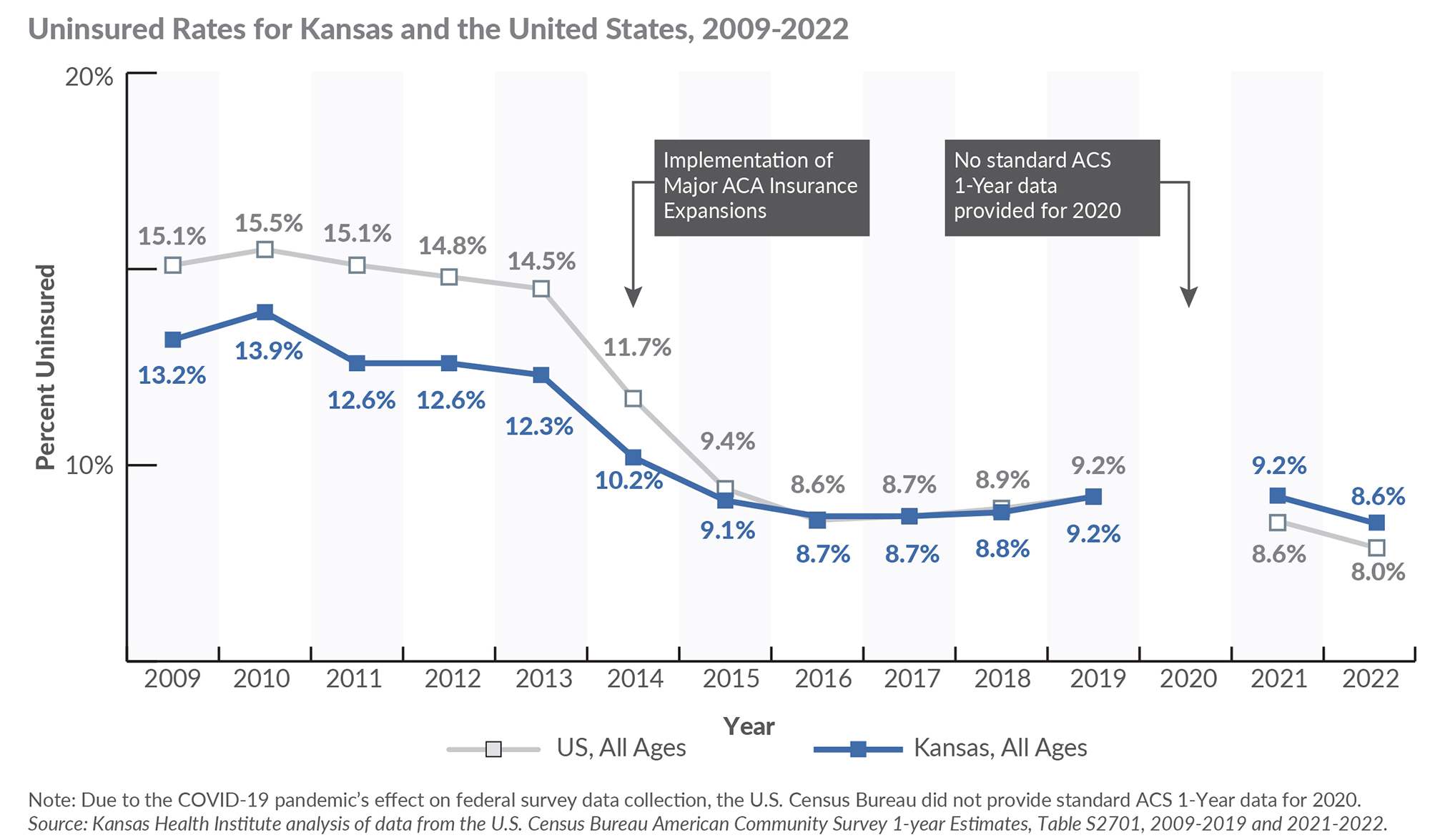TOPEKA, KANSAS, September 2023 – Today, Sept. 14, the U.S. Census Bureau released its latest estimates of health insurance coverage in Kansas and across the United States. The American Community Survey 1-year estimates show Kansas and national uninsured rates significantly decreased. However, Kansas’ uninsured rate is higher than the U.S. uninsured rate for the second year in a row. The Kansas uninsured rate decreased from 9.2 percent in 2021, to 8.6 percent in 2022, compared to 8.6 percent to 8.0 percent in the U.S. for the same time frame. Last year was the first year Kansas’ uninsured rate was significantly higher than the nation’s. Disparities among racial and ethnic minority groups continue. ACS 1-year estimates show, in 2022, Hispanic Kansans of any race were uninsured at a rate three times that of non-Hispanic White Kansans (additional details below).
The 2022 ACS 1-year estimates, released today, reflect data collected in 2022. According to the 2022 ACS 1-year estimates, 247,070 Kansans lacked health insurance. The ACS 1-year estimates show that 26,367,820 were without health insurance in the U.S. The U.S. Census Bureau also reported that nine states, including Kansas, experienced an increase in private health insurance coverage from 2021 to 2022.
“In 2022, federal and state policies emphasized maintaining insurance coverage for populations during the public health emergency,” said Linda Sheppard, Strategy Team Leader, KHI. “The decline in the uninsured rate may reflect those policies. While encouraging, we know that some of those policies, including continuous Medicaid eligibility, have already started to unwind.”
The uninsured rate among the Hispanic (any race) population in the U.S. significantly decreased from 17.7 percent to 16.8 percent between 2021-2022, while the rate in Kansas remained similar (20.3 percent to 20.1 percent). Although the uninsured rate for Black or African American individuals in both Kansas and the U.S. significantly decreased, the rate in Kansas remained higher than in the U.S. In addition, the uninsured rates for Hispanic Kansans of any race and Black or African American Kansans continue to be significantly higher than for non-Hispanic White Kansans (20.1 percent, 10.5 percent and 6.3 percent, respectively).
“The coverage gap for Hispanic and Black Kansans remains significant,” said Kari Bruffett, President and CEO, KHI. “Understanding the barriers that prevent Kansans from accessing insurance coverage, and why those barriers differ so significantly by population, is essential to tackling disparities to improve health in Kansas.”

